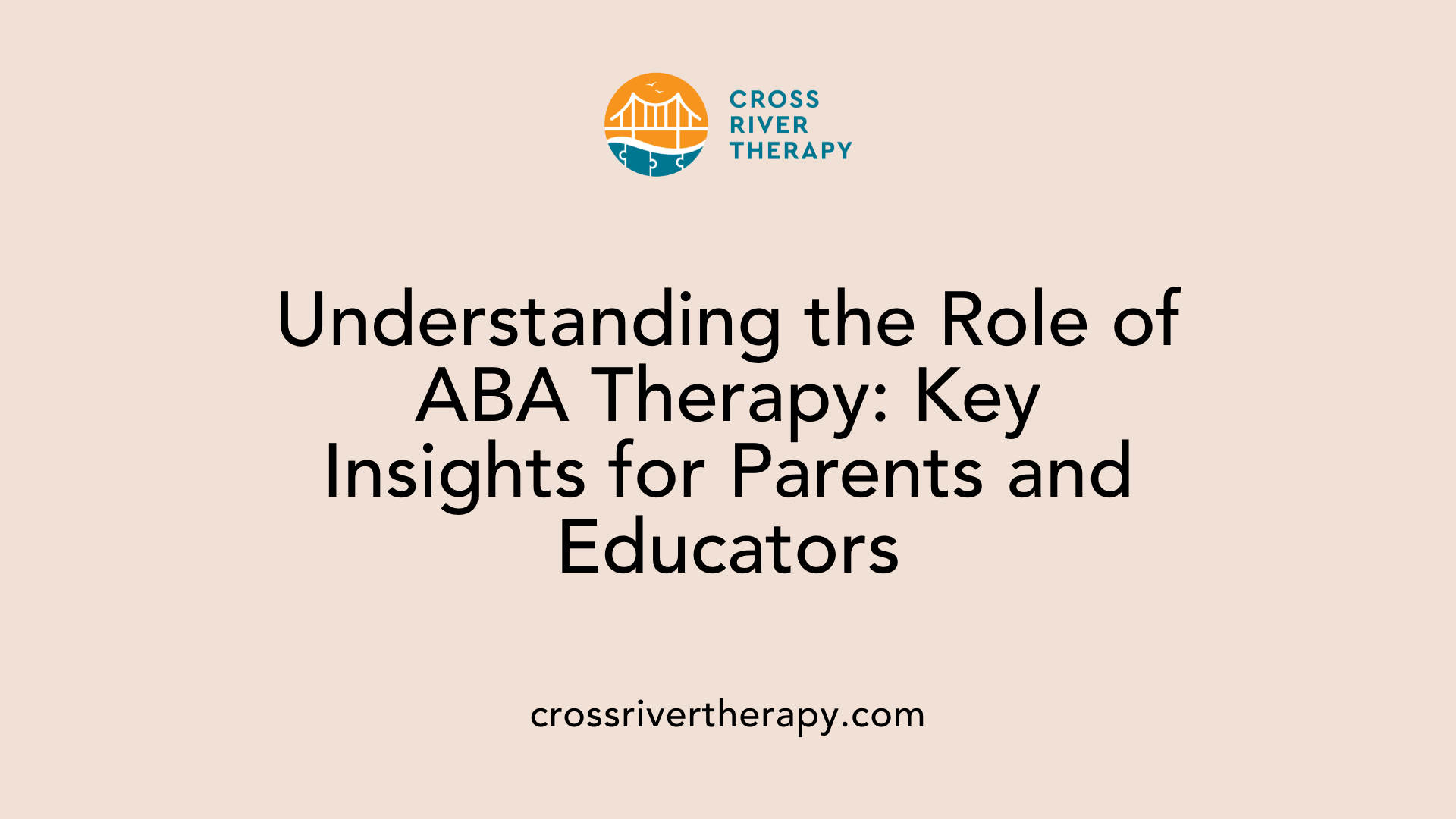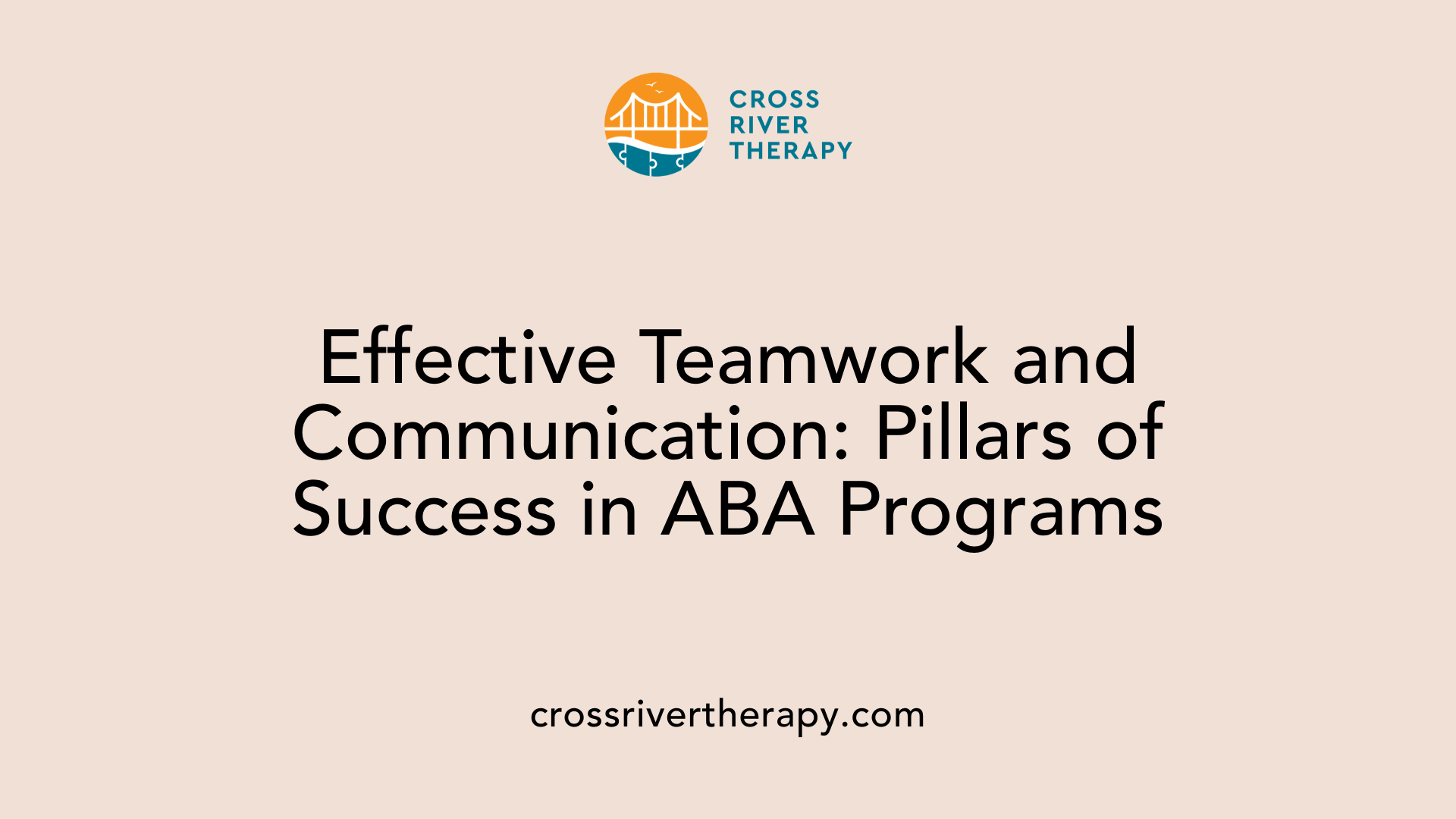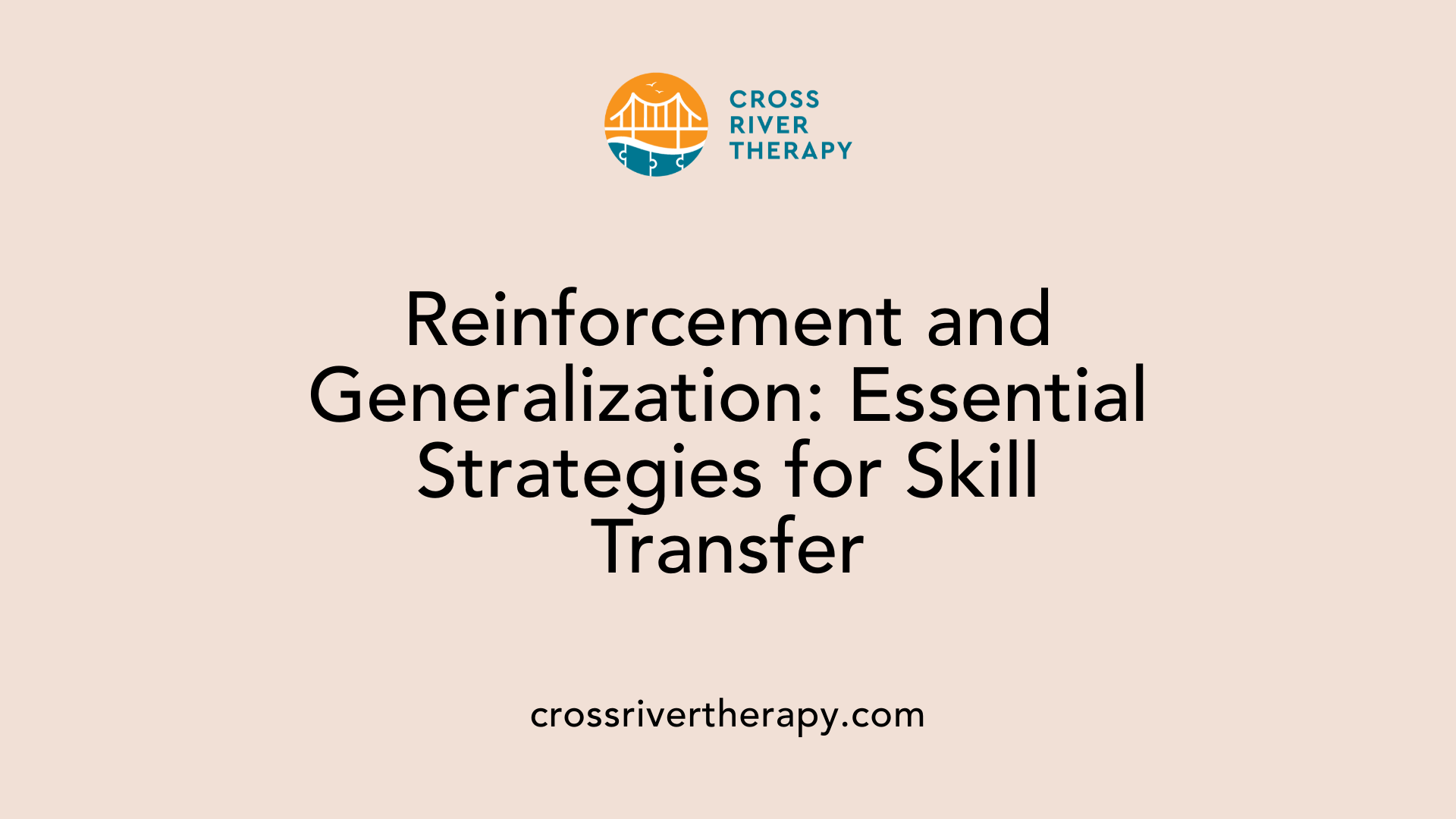How to Balance Home and School ABA Therapy Programs
Mastering the Dance Between Home and School ABA Therapy
Introduction: Navigating Dual Worlds of Progress and Education
Balancing home and school ABA therapy programs is a complex task for families of children with autism spectrum disorder. With both home and school environments playing vital roles in a child's development, parents often face the challenge of effectively integrating educational requirements with essential behavioral therapies. This article aims to guide parents through this intricate journey, providing strategies, tips, and insights to harmonize ABA therapy and school schedules.
Understanding the Role of ABA Therapy at Home and School

The Importance of ABA Therapy for Children with ASD
ABA therapy is recognized as the gold standard for intervention with children diagnosed with Autism Spectrum Disorder (ASD). This evidence-based approach is crucial for developing essential skills such as communication and social interaction while decreasing maladaptive behaviors. Research indicates that sustained ABA therapy, ideally 20-40 hours a week, significantly contributes to a child's progress and enhances their long-term outcomes. Not only does it focus on specific goals tailored to individual needs, but it also fosters integration into various environments, supporting learning and skill generalization across contexts.
How ABA Therapy Complements Educational Goals
Incorporating ABA therapy alongside traditional schooling offers a comprehensive approach to a child's development. School settings address academic skills, whereas ABA focuses on behavioral and social-emotional learning. By utilizing ABA techniques, children can navigate school routines more effectively, improving their ability to follow instructions and manage transitions.
For families, balancing ABA sessions with school participation can often be customized. Options like half-day attendance or alternating between ABA and classroom learning can help meet the child's specific needs, ensuring that both therapeutic and educational goals are being addressed simultaneously.
Integration of ABA Methods in School Settings
ABA therapists can collaborate with educators, creating an integrated support system tailored to the child’s ongoing needs. This integration helps maximize skill retention and application within both school and home environments. Furthermore, parents are encouraged to maintain regular communication with therapists, reinforcing skills learned during ABA sessions at home and thus enhancing consistency across different settings.
| Topic | Description | Benefits |
|---|---|---|
| ABA Therapy | Evidence-based approach targeting core skills for children with ASD. | Improves functional skills and social interactions while reducing behavioral issues. |
| Educational Goals | Focus on academic and social-emotional skills in school programs. | Enhances children’s ability to engage in structured learning environments and better manage their behavior. |
| Integrated Support | Collaboration between ABA therapists and school staff. | Provides coordinated, consistent support tailored to individual child's needs across home and school. |
With dedicated effort from both parents and providers, the synergy between home and school can foster a nurturing environment for children with ASD, promoting their overall development.
The Dynamics of Teamwork and Communication

Importance of effective teamwork in ABA programs
Effective teamwork is fundamental to the success of home-based Applied Behavior Analysis (ABA) programs. Collaboration among therapists, behavioral consultants, and families enhances the overall effectiveness of interventions. When teams work cohesively, they can share insights, identify challenges, and adjust strategies in real-time, promoting a seamless therapeutic experience for the child.
Role of communication between parents, therapists, and teachers
Open communication between parents, therapists, and educators is crucial. Regular updates about the child's progress ensure that all parties are informed and can provide consistent support. Parents can offer valuable feedback, while therapists can suggest strategies that families can use at home. This ongoing dialogue empowers parents to be engaged partners in their child's development.
Ways to ensure consistent approaches across environments
To maintain consistency across all environments, clear expectations must be established among all providers. Here are some practical methods:
- Set Rules: Define punctuality, data tracking, and interpersonal respect.
- Unified Strategies: Ensure that the same techniques are applied at home and in therapy sessions.
- Parental Training: Equip parents with the skills to implement ABA strategies effectively, reinforcing learning throughout daily life.
With strong teamwork and communication, children can experience a comprehensive support system that extends beyond the therapy room, fostering their growth in multiple settings.
| ABA Therapy Dimension | Description | Importance |
|---|---|---|
| Applied | Targets socially significant behaviors | Improves life quality |
| Behavioral | Focuses on observable and measurable behaviors | Enables accurate progress tracking |
| Analytic | Relies on evidence-based research | Informs effective interventions |
| Technological | Employs specific techniques and procedures | Ensures replicability |
| Conceptually Systematic | Ties interventions to established principles | Provides theoretical backing |
| Effective | Ensures significant behavior change | Demonstrates intervention success |
| Generality | Maintains learned behaviors across environments | Supports skill application in diverse contexts |
Setting Up for Success: Home Environment

How to create an effective home therapy environment
Creating a conducive environment for therapy requires clear organization and planning. Start by establishing a dedicated therapy area where distractions are minimized. Ensure it is equipped with necessary materials and tools that therapists may need during their sessions. Setting clear expectations for providers, such as punctuality and respect for the family, fosters professionalism and consistency in treatment.
Integrating family members into the therapy process
Involving family members in the therapy process is crucial for reinforcing learned skills. This can be as simple as acknowledging siblings and creating opportunities for them to participate during sessions. Engaging everyone not only provides support for the child but also enhances family dynamics and healing.
The significance of a clean and organized therapy space
Maintaining a tidy and organized environment signals respect for the professionals who work with your child. A clean space helps increase focus during sessions, allowing for better learning outcomes. Establish structured routines that include regular household cleaning practices to ensure that the therapy space remains inviting and functional.
| Topic | Details |
|---|---|
| Home therapy environment | Establish a designated, distraction-free therapy area with necessary supplies to facilitate effective sessions. |
| Family involvement | Encourage participation from all family members, providing support and reinforcement for the child receiving therapy. |
| Cleanliness and organization | Regularly maintain the therapy area to promote focus and respect for the providers, enhancing overall session effectiveness. |
Combining School Schedules with ABA Therapy
Strategies for coordinating therapy with school hours
Finding a balance between ABA therapy and school can be instrumental in a child's development. Parents can consider options like half-day school attendance or alternating days between school and ABA sessions. This flexibility allows for proper educational support while ensuring the child receives the necessary therapy.
Understanding the benefits of both environments
Both ABA therapy and formal education serve distinct purposes. While ABA focuses on developing communication, social skills, and daily living skills, schools emphasize academic learning and social-emotional growth. Combining these environments helps children with autism spectrum disorder generalize skills learned during therapy into real classroom settings, enhancing their overall adaptability.
Choosing the right balance based on child's needs
The ideal quantity of ABA therapy depends heavily on the child's individual requirements. Research indicates that children with autism thrive on 20-40 hours per week of ABA services, correlating with improved long-term outcomes. However, the decision must consider factors like potential burnout due to excessive therapy hours versus the need for socialization and free play.
Answer to Common Questions
Is 40 hours of ABA too much?
The appropriateness of 40 hours of ABA therapy fluctuates based on the child's unique needs. For some children requiring intensive support, this schedule can be effective. Nonetheless, parents should monitor for signs of burnout and ensure that their child's schedule also allows for free play and socialization with peers. Collaboration with therapists is crucial to tailoring the therapy schedule to foster the best outcomes for the child.
Final Thoughts
Ultimately, a well-coordinated approach, where both school and ABA therapy complement each other, can support developmental progress and success for children with autism.
Ensuring Consistency Across Environments
How to maintain consistent therapy strategies at home and school
Maintaining consistent therapy strategies between home and school is crucial for maximizing the benefits of ABA therapy. Parents and educators can collaborate by implementing the same behavior management techniques, such as positive reinforcement and simple instruction. This uniformity helps children transfer their learned skills across different environments.
Importance of regular communication with therapists and school staff
Regular communication with ABA therapists and school staff ensures that everyone is aligned on the child’s progress and strategies. Parents should provide updates about their child's home experiences and be receptive to feedback from therapists. This two-way communication fosters a cohesive support system, addressing any emerging concerns collaboratively.
Role of parental involvement in reinforcing skills
Parental involvement is essential in reinforcing skills learned during therapy sessions. By integrating ABA principles into daily routines—like mealtime or playtime—parents can help solidify behaviors and ensure their children understand expectations across various contexts. This active engagement creates an environment conducive to growth, aiding in effective skill generalization.
Overcoming Challenges: Scheduling and Collaboration
Addressing Common Scheduling Challenges Between Home and School
Balancing ABA therapy and school can present scheduling challenges. Families often juggle several commitments, making it crucial to effectively manage both environments. Parents should assess the needs of their child, determining whether more intensive ABA sessions are necessary or if a mix of school and therapy is appropriate.
Methods for Ensuring Effective Collaboration Between Parents and Professionals
To foster effective collaboration, set clear expectations with providers. This includes punctuality and participation in discussions about progress. Regular communication between parents and therapists ensures that everyone is aligned on the child’s goals and techniques. Additionally, involving other siblings can create a supportive household atmosphere that benefits all family members.
The Role of Individualized Support from ABA Services
Individualized support from consistent ABA services adapts to the growth of each child. Parents play a critical role by reinforcing therapy strategies at home. This can lead to meaningful skill acquisition, ensuring that the child generalizes what they learn in therapy into everyday settings. Depending on your child's specific needs, evaluate whether home or school provides a better environment for ABA therapy.
| Topic | Description | Relating Strategies |
|---|---|---|
| Scheduling | Balance between therapy and school commitments | Use half-day school options or alternating days |
| Collaboration | Maintain open communication with providers | Regular updates and attendance at sessions |
| Individualized Support | Tailor ABA strategies to the child’s needs | Integrate techniques into family routines |
The Benefits of In-Home ABA Therapy
Advantages of Providing ABA Therapy Within the Home Environment
In-home ABA therapy offers a range of benefits that contribute to effective learning for children with autism. Firstly, it provides a familiar and comfortable environment, allowing children to feel more at ease during sessions. This comfort can enhance their willingness to engage and learn new skills.
Applying Therapy Skills to Real-Life Situations
One significant advantage is the ability to work on essential life skills in real-life contexts. For instance, therapists can teach toilet training and personal hygiene directly in the bathroom, which reinforces learning through direct application. This contextual learning helps ensure skills are not only learned but also generalized to everyday settings.
Maintaining a Supportive and Familiar Setting for Learning
Furthermore, the home setting allows for greater parental involvement. With parents actively participating and learning reinforcement techniques, skills gained during therapy can be extended into daily routines. The collaborative approach fosters a supportive atmosphere that not only benefits the child but also empowers families to maintain consistency in therapeutic practices, enhancing overall effectiveness.
Reinforcement and Skill Generalization

Importance of Positive Reinforcement
Positive reinforcement is a cornerstone of ABA therapy, encouraging desired behaviors through immediate rewards. This not only motivates children but also helps them understand which behaviors are acceptable and beneficial across various settings.
How to Generalize Skills Learned During Therapy Across Environments
Generalizing skills means applying what a child learns in therapy to real-life situations. For example, reinforcing communication skills learned during therapy at home can be done by providing praise when a child expresses their needs verbally in everyday scenarios. Parents can utilize simple strategies, such as giving instructions or rewards for following them, in multiple environments like home and public spaces.
Role of Parents in Supporting Generalization
Parents play a vital role in the generalization process. By incorporating ABA strategies into daily routines, they can reinforce skills outside of therapy. Consistent communication with therapists ensures parents understand progress and can adapt techniques. This collaborative approach supports the child's learning, enabling them to thrive in different contexts.
Future Considerations and Support Networks

Future Research in ABA Therapy Programs
Ongoing studies aim to further refine and improve ABA therapy programs, such as the Balance Program. Preliminary evaluations have shown promise in decreasing problem behaviors while enhancing communication and social skills in children with ASD. Future randomized controlled trials will seek to solidify these findings and explore broader applications of the program.
Connecting with Support Groups for Shared Experiences and Guidance
Parental involvement is enhanced through connections with support groups. These communities provide an invaluable platform for parents to share experiences, seek guidance, and find emotional support. Sharing strategies and insights about managing therapy can relieve pressure and foster a sense of belonging.
Long-Term Planning for Continued Therapy and Education
Planning for a child's ongoing therapy and educational needs is vital. Families might consider a combination of ABA therapy and school to optimize learning and behavior management. Consistent communication between parents and therapists can promote an adaptive approach, ensuring that strategies remain effective as the child grows and changes.
Conclusion: Charting a Pathway to Balance and Growth
Balancing home and school ABA therapy programs requires careful coordination, effective communication, and a strong support network. By understanding the unique benefits and challenges of both settings, parents can create a tailored approach that caters to their child's specific needs. Collaboration with therapists and educators, coupled with consistent reinforcement of skills across environments, forms the backbone of successful therapy integration. As families navigate this journey, continued learning, community support, and adaptability will ensure the harmony and efficacy of therapy programs for a child's development.
References
- Managing a Home-Based ABA Program - ASAT Online
- Day-Time ABA Therapy and School - Innovative Behavior Options
- Time Management and ABA Therapy
- The Importance of Sticking to Consistent ABA Therapy
- Parental Role in ABA Therapy - Reinforcing Progress at Home
- ABA Therapy at Home:The Future of Autism Support for Families
- ABA Therapy vs School: Making the Right Choice For Your Child
- An Evaluation of “Balance”: a Home-Based, Parent-Implemented ...
- What are the 7 Dimensions of Applied Behavior Analysis (ABA)
- Patient Outcomes After Applied Behavior Analysis for Autism ...



